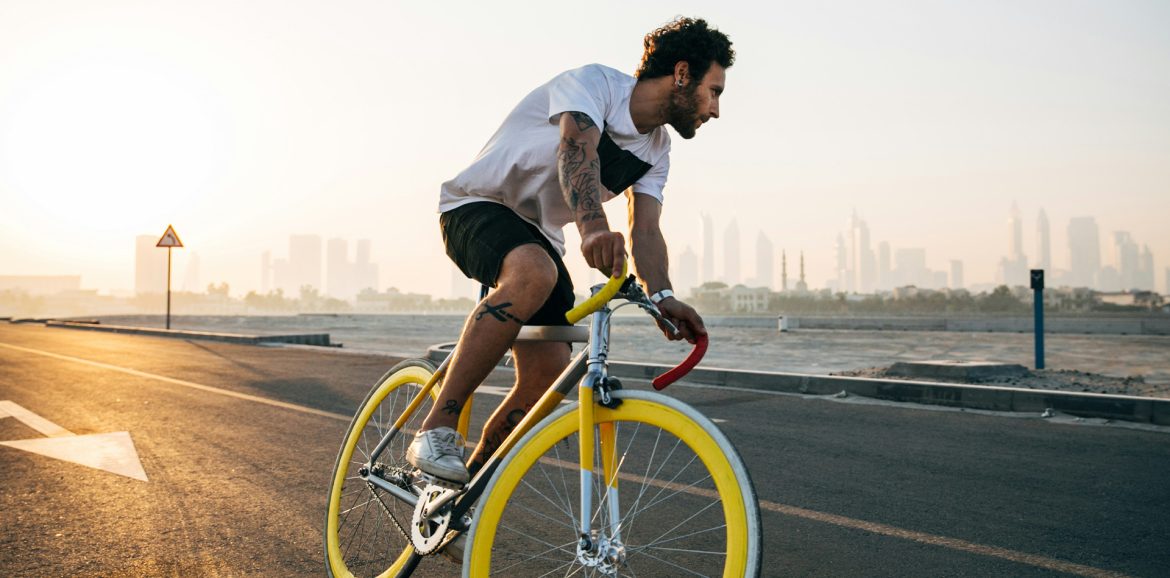If you wear a hearing aid, you know how important good hearing is in everyday life. But what if you enjoy sports? Whether it’s a brisk walk, an avid team sport or a bike ride – you want to be able to move freely, sweat, enjoy yourself and continue to hear what’s going on around you. Fortunately, a hearing aid doesn’t have to be an obstacle. In fact, with the right preparation, you can exercise just as comfortably as without.
In this blog, you’ll learn how to exercise safely, comfortably and confidently with your hearing aid. We share practical tips, smart tools and answers to frequently asked questions. Because playing sports with a hearing aid? It can be done – and with a few adjustments, it might even be better than you thought.
Why wear your hearing aid during sports?
For some athletes, it is tempting to take their hearing aids off during exercise. For example, because of sweat, wind noise or fear of losing the device. But most of the time, it does make sense to just keep your device in. Why?
- You hear directions from a coach or teammates better.
- You notice traffic, ambient noise or alerts faster.
- You feel more confident and connected to your surroundings.
- You avoid unnecessary isolation, especially in group sports or in gyms.
In short: staying heard also means staying involved. And with some preparation, that need not be a problem at all.
Challenges of exercising with a hearing aid
It is good to know what you might encounter as an athlete with a hearing aid. That way you can look for solutions in a focused way. Some common challenges:
1. Sweat
Sweat is the biggest enemy of electronics – including hearing aids. With intense exercise, moisture can get behind your ears, which can cause long-term damage.
2. Moving parts
Sports involving a lot of movement (such as running, dancing or team sports) can cause hearing aids to loosen or slide.
3. Wind noise or background noise
Exercising outdoors? Then wind noise can interfere with sound quality, especially when running or cycling.
4. Hygiene
A device worn frequently while sweating should be cleaned properly to prevent ear infections.
Fortunately, there are practical solutions to all of these issues.
Tips for safe and comfortable exercise with a hearing aid
1. Use a sweatband or sports headband
A sweatband (also called a sports headband or hairband) traps perspiration before it reaches your device. It keeps your hearing aid dry and in place. Preferably choose a breathable, washable variety that fits well without being too tight.
2. Ensure good fixation
Hearing aid holders or clips can help keep your device in place – ideal for sports with lots of movement. Consider an elastic cord that attaches your device to your clothing. That way, you can prevent loss during unexpected movement.
3. Use a wind filter or wind shield
For outdoor activities such as cycling or running, wind noise can be a nuisance. Some hearing aids have built-in wind noise reduction. You can also place small wind shields over the microphones – similar to microphones on TV. Ask your hearing care professional about this.
4. Adjust your settings
Many modern hearing aids have different listening programs. Ask your hearing care professional if your device can have a sports or outdoor program, in which background noise is filtered out slightly and speech is better emphasized.
5. Keep your device safe during contact sports
In contact sports such as judo, boxing or rugby, it is usually safer to take your hearing aid off temporarily. Always store it in a sturdy, moisture-proof storage case. Special sports cases can be purchased that protect your device from bumps and moisture.
6. Use a dry box after exercise
A dry box removes moisture from your device after a sweaty workout. Your device will stay in good working order longer and you reduce the risk of damage from condensation. There are electric and non-electric variants.
7. Clean your device regularly
Sweat, dust and dirt can build up in your device’s microphones or openings. Clean your device daily with a dry cloth and weekly with special cleaning wipes or a brush. Have the device checked regularly at your hearing care professional.
Exercising in all weathers: what if it rains?
Most modern hearing aids are splash-proof (IP rating), but not completely waterproof. A light rain shower will often survive your device just fine, but exercising in torrential rain or a wet suit is not a good idea without protection.
Tip: Wear a cap or hood over your sports headband to give your device extra protection from rain. And dry your device thoroughly after exercise or place it directly in a dry box.
Swimming with a hearing aid?
No, that’s not a good idea. Hearing aids are not made for immersion in water. If you still want to be able to hear when doing water sports or in the pool, there are alternative solutions such as:
- Custom waterproof hearing protection that muffles sound but allows communication.
- Waterproof bone conduction devices (very specific, please contact us).
- Communication aids for instructors (e.g. in diving lessons).
For water activities, it is better to keep your hearing aid in a safe, dry case.
Frequently Asked Questions
Can I run or work out with a hearing aid?
Sure! Just make sure you have good fixation and protection from sweat. A sport band or clip already helps a lot.
Will my hearing aid break down faster if I play sports with it?
Not if you handle sweat, moisture and cleaning carefully. Regular inspection and maintenance prolongs the life.
What if my hearing aid gets damaged during sports?
Check whether your hearing aid is insured for damage or loss. Some health insurance companies offer additional coverage.
Keep moving – with your hearing aid
A hearing aid does not have to be an obstacle to an active life. In fact, good hearing contributes to safety, social interaction and fun during sports. Whether you hike alone or train in a team – with the right preparation, you will exercise as freely as anyone else.
Don’t let fears about sweat, wind or loss hold you back. There are plenty of tools to protect your device and enhance your sports experience. And don’t forget: your hearing care professional is also happy to think with you about a customized solution.
Want tips on hearing protection during sports, try a sports headband or find out which products are suitable for your type of hearing aid? Then take a look in our webshop or send us a message. We’re happy to help you get started – even when you’re moving.








